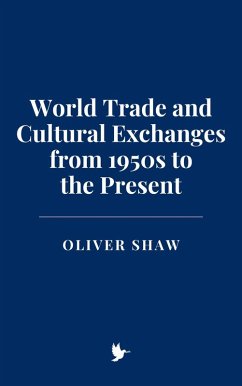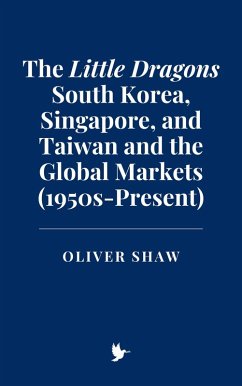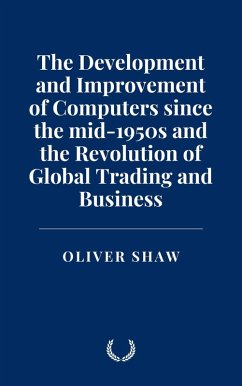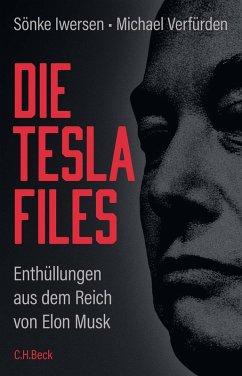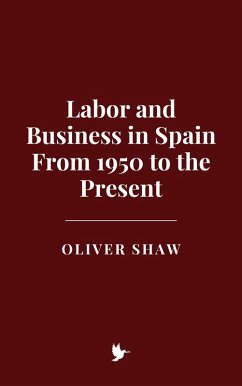
The U.S.-based Corporations and the Domestic and International Markets in the 1950s (eBook, ePUB)

PAYBACK Punkte
0 °P sammeln!
The 1950s marked a transformative era in American history, defined by unprecedented economic growth, societal shifts, and a newfound global leadership role. Emerging from the devastation of World War II, the United States found itself in a unique position of strength. While much of Europe and Asia grappled with the arduous task of rebuilding, the U.S. had not only emerged unscathed in terms of physical infrastructure but had also experienced a wartime economic boom that catalyzed industrial innovation and expanded its productive capacity. We will delve into the economic, political, and social ...
The 1950s marked a transformative era in American history, defined by unprecedented economic growth, societal shifts, and a newfound global leadership role. Emerging from the devastation of World War II, the United States found itself in a unique position of strength. While much of Europe and Asia grappled with the arduous task of rebuilding, the U.S. had not only emerged unscathed in terms of physical infrastructure but had also experienced a wartime economic boom that catalyzed industrial innovation and expanded its productive capacity. We will delve into the economic, political, and social forces that underpinned this period, drawing on historical analysis, theoretical frameworks, and primary sources to illuminate the complex dynamics of post-war resilience.
The seeds of the 1950s economic boom were sown during the war itself. As historian Paul A. Baran argued, the war acted as a "super accelerator" for capitalist development, funneling immense resources into technological advancement and infrastructure. Factories that once produced tanks and aircraft were swiftly retooled to churn out consumer goods, from automobiles to washing machines. This transition was not without precedent; as early as 1944, President Franklin D. Roosevelt had outlined his vision for a post-war America in his "Second Bill of Rights," which emphasized economic security and prosperity for all citizens. Although not fully realized, Roosevelt's vision underscored the federal government's active role in shaping the economy-a theme that would persist throughout the decade.
Central to the post-war recovery was the Marshall Plan, a $13 billion aid package enacted in 1948 to rebuild Western Europe's shattered economies. While ostensibly aimed at fostering European recovery, the plan also served U.S. interests by opening markets for American goods and countering the spread of communism. Secretary of State George C. Marshall, in his iconic 1947 Harvard commencement speech, articulated the dual purpose of the plan: economic stability as a bulwark against political extremism. This strategic intertwining of economic and geopolitical goals characterized much of U.S. policy in the 1950s, positioning American corporations as both agents of capitalism and symbols of American values abroad.
The seeds of the 1950s economic boom were sown during the war itself. As historian Paul A. Baran argued, the war acted as a "super accelerator" for capitalist development, funneling immense resources into technological advancement and infrastructure. Factories that once produced tanks and aircraft were swiftly retooled to churn out consumer goods, from automobiles to washing machines. This transition was not without precedent; as early as 1944, President Franklin D. Roosevelt had outlined his vision for a post-war America in his "Second Bill of Rights," which emphasized economic security and prosperity for all citizens. Although not fully realized, Roosevelt's vision underscored the federal government's active role in shaping the economy-a theme that would persist throughout the decade.
Central to the post-war recovery was the Marshall Plan, a $13 billion aid package enacted in 1948 to rebuild Western Europe's shattered economies. While ostensibly aimed at fostering European recovery, the plan also served U.S. interests by opening markets for American goods and countering the spread of communism. Secretary of State George C. Marshall, in his iconic 1947 Harvard commencement speech, articulated the dual purpose of the plan: economic stability as a bulwark against political extremism. This strategic intertwining of economic and geopolitical goals characterized much of U.S. policy in the 1950s, positioning American corporations as both agents of capitalism and symbols of American values abroad.
Dieser Download kann aus rechtlichen Gründen nur mit Rechnungsadresse in A, B, CY, CZ, D, DK, EW, E, FIN, F, GR, H, IRL, I, LT, L, LR, M, NL, PL, P, R, S, SLO, SK ausgeliefert werden.




